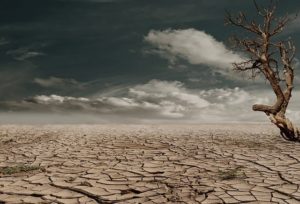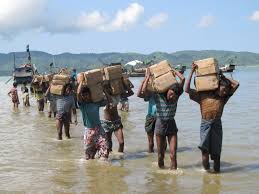Studies have shown that at least 40% of all intrastate armed conflicts over the past 65 years had natural resources as an important triggering factor. Although environmental factors are rarely the sole cause of violent conflicts, the scarcity and destruction of natural resources – especially when it affects water availability, fertile land or food security – aggravates existing tensions and may create new ones. One example is the ongoing conflict in Darfur. The fighting started as a dispute between herders and farmers over failing lands, after droughts shrank the extension of grazing land considerably. It has later been intensified by other motives, but the environmental stress was at the starting point.

Image by Marion Wunder. Pixabay
Other civil wars such as those in Syria and Yemen have also had their tensions linked to environmental changes. In Syria, before the war began, an intense drought caused 75% of Syria’s farms to fail and 85% of livestock to die, intensifying regional instability. Drought has also exacerbated conflict in Yemen by causing water shortages and food insecurity in the country. The millions of people facing famine and the catastrophic cholera crisis that has developed, along with the ongoing war, have contributed to what is being called “the world’s worst humanitarian crisis”[1]. The link between environmental degradation and conflict is clear: when the survival of groups of people are threatened because of lack of natural resources, the potential for violent conflict is much higher.
In the coming decades, as the global population continues to grow, disputes over natural resources and extreme climate stresses are expected to double the risk of violent conflict. A report by the Environmental Justice Foundation warns that climate change will likely reshape the environment in ways that may cause the largest refugee crisis in human history. The report has also found that “conflicts associated with natural resources are twice as likely to relapse into conflict in the first five years” [2]
But more than a cause of concern, the environment can be a source of hope and a valuable peacebuilding tool. Many have pointed to the potential of environment to provide a platform of collaboration. Common environmental issues can encourage people to come together, in spite of their differences, and this can be used to foster cooperation and mutual trust between conflicting parties. There are many examples of successful environmental cooperation between nations who were hostile towards each other, such as the Indus Water Treaty between India and Pakistan, and the Cordillera Condor, a conservation “peace park” in the border between Peru and Chile, where there used to be a long history of territorial conflict. They prove that joint efforts to restore ecological systems can be the entry point to a more peaceful and collaborative political relationship.

Photo: Mathias Eick, EU/ECHO, Rakhine State, Myanmar/Burma, Sept 2013. flickr.com/photos/eu_echo/10015500834
In post-conflict countries, where years of destruction and violence leave people struggling to survive, trying to rebuild sustainable livelihoods is extremely important, and it should involve efforts to restore the environment. Collaborative initiatives such as the ones mentioned above should be included as much as possible because they drive cooperation towards a common goal – preserving or restoring the environment – in ways that build trust and contribute to conflict prevention.
However, bringing together issues of environment, peace and security is a very new approach, and one that most are not used to and fail to understand. Environment is still usually associated with simply conservation of species or planting trees. There is an amusing true story that illustrates this well: when David Jansen, a leading figure in environmental peacebuilding, went to Afghanistan and the Democratic republic of Congo to address environmental challenges, his local hosts took him to the zoo [3]. This shows the amount of work still ahead and the challenges of environmental peacebuilding. Without better knowledge of the great potential the environment can have in promoting peace and preventing conflict, the international community may be missing a powerful tool, especially in the face of our future environmental challenges. This awareness needs to be better used if we are really committed to achieving long lasting sustainable peace for all.
Anelise Vaz
[1] Almosawa, S.; Hubbard, B.; Griggs, T. ’It’s a Slow Death’: The World’s Worst Humanitarian Crisis. The New York Times, 23 August 2017.
[2] Environmental Justice Foundation. Beyond Borders: our changing climate – its role in conflict and displacement. Report: EJF, 02 November 2017.
3 Wilson Center Staff. A Paradigm for Peace: Celebrating “Environmental Peacemaking”. News Security Beat, 20 March 2018.

